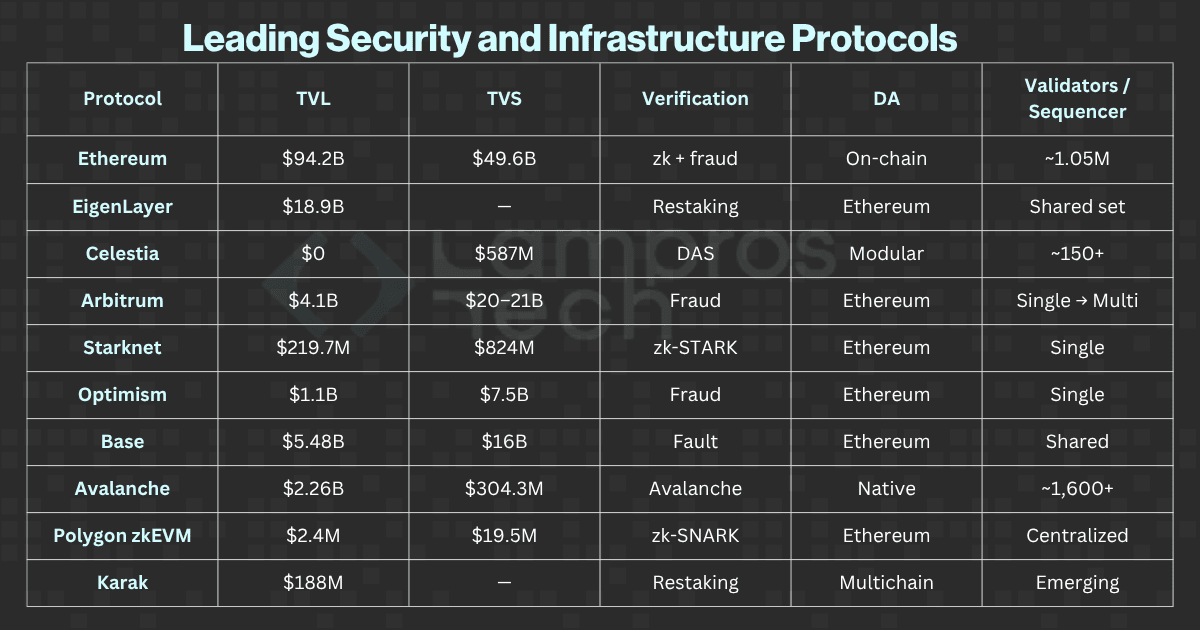Contact Us
If you're working on something real — let's talk.
Development & Integration
Blockchain Infrastructure & Tools
Ecosystem Growth & Support
© 2025 Lampros Tech. All Rights Reserved.
Published On Oct 10, 2025
Updated On Oct 10, 2025



Growth Lead
FAQs

Blockchain security in 2025 is defined by economic stake, cryptographic proofs, and operational decentralization. Instead of relying solely on audits, protocols embed trust into architecture using restaking, zk proofs, and modular data availability layers.

Restaking allows validators to reuse their staked assets across multiple networks, extending security through shared economic guarantees. Platforms like EigenLayer and Karak enable this, improving capital efficiency but introducing correlated risk.

Data availability ensures that all transaction data is accessible and verifiable by the network. Without it, nodes can’t confirm state validity, making blockchains vulnerable to hidden data or censorship. It’s now a foundational layer for modular and rollup-based architectures.

zk-rollups use cryptographic proofs for instant, verifiable finality and stronger security. Optimistic rollups rely on challenge periods and fraud proofs, offering cheaper, faster transactions but with delayed finality and trust in honest participants.

Key metrics include Total Value Locked (TVL), Total Value Secured (TVS), verification model (zk, fraud, or hybrid), data availability model, and validator decentralization, which define a protocol’s economic, cryptographic, and operational resilience.